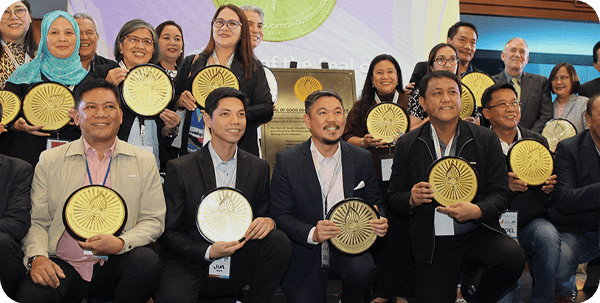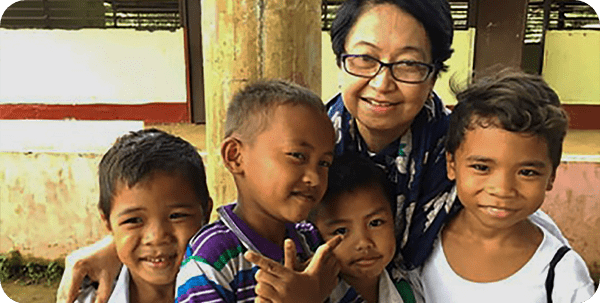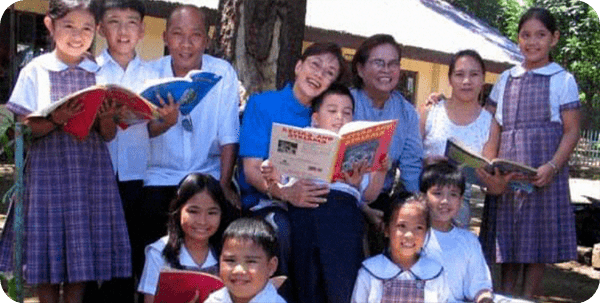By: Matthew Guevara
Volunteer
(The views of a young high school student on how the workshop for School Governing Council is conducted are not just interesting; we are learning from him.)
From the 30th to the 31st of May 2017, principals, parents and barangay leaders from the city of Valenzuela gathered at the Waterfront Hotel for a two-day seminar on education entitled “We Can Work It Out: Making our SGCs Work”. The seminar’s primary goal was to further develop School Governing Council (SGC) structures throughout the city, specifically as a more inclusive organization compared to PTAs.—the idea being that an integration of community members such as local business owners into a school’s administrative body could help address deficits in manpower and budget.
Day 1 began with a plenary led by Dr. Milwida Guevara as she addressed the general state of education in Valenzuela. She talked about how, even with the resources and efforts devoted to education, some incoming high school students still did not know how to perform basic tasks such as read the alphabet or divide numbers. Using the dismal statistic as her reference, she then reminded the participants that these were the same children they had taken responsibility for as educators and public figures. Clearly, the situation needed to improve drastically; however, she quickly added that their responsibility included more than just teaching Math or English. “Students these days need an education that values the importance of well-roundedness—an education that immerses them not just in textbooks, but also in sports and other after-school activities. One way of ensuring they receive it is by having an active SGC.” Overall, I thought that the plenary was an engaging and thought provoking way of beginning the seminar because of the way it established a professional, yet energetic atmosphere that quickly found its way to the cluster discussions.
The set of cluster discussions led by Dr. Guevara, Councilor Feliciano, and Dir. Atendido began with the Appreciative Inquiry. Moderators asked questions about popular issues and participants could give their input on what they thought the cause and solution to those issues were. For this, a new set of statistics were brought up and discussed. The first was Cohort Survival Rates of Grade 6 Pupils. The numbers weren’t horrible, but for an organization like Synergeia with a target rate of 100%, I could see how explanations were warranted. A few were offered by participants and slowly, they gave me a better handle on what these schools faced on a regular basis. I understood how the dwindling numbers were not necessarily indicative of poor teaching performances because on the other hand, drop outs, bullying, and relocations due to broken families were sadly all too common among students in Valenzuela. Several schools even reported a growing trend among low-income families. Since their income cannot support all their children going to school at once, the older ones are often prioritized while the others temporarily drop out of school. In the end, these factors, combined with a standard academic curve, all contribute to the subpar survival rates.
Speaking of academic curves, the second set of statistics that were brought out for the discussion were the National Achievement Test Results of Grade 6 Pupils. Again, the figures were well below Synergeia’s target and an interesting discussion broke out—one on the role of parents in education. It spawned from how the participants—teachers, administrators, and barangay officials themselves—attributed the low test scores to inadequate support from parents. They said that because most low-income parents work all day, there was a lack of parental follow through and supervision with their children. Soon enough, that lack of discipline causes them to habitually skip school and even drop out—choosing to spend their time in internet shops instead. “This is the consequence of parents forgetting about the part they play in making sure that whatever their child learns in school is retained and reinforced at home.”
However, one participant brought up an interesting counterpoint. She said that even if a parent is there to help, when they themselves are not equipped with a level of education high enough to understand what their child is learning, the most they can do is send their child to school and hope that it will be enough. She added that this is why schools have to step up, more than ever. “We constantly have to look at our teachers and barangay officials to see whether we’re all devoted to making that sure the kids are learning and making the right decisions.” Out of all the discussions and activities from the seminar, I liked this one the most because it prompted a passionate discussion between the participants about the role they all had in education, even if they themselves weren’t in the teaching profession.
Following the Appreciative Inquiry, the cluster went on to the group activity involving a group puzzle, “Working with Others: Do we Achieve More or do we Achieve Less? Based on the standards of the Mentor’s Guide, the participants eventually realized all the insights the activity hinted at. However, what I noticed was how hesitant they were to split from their groups once realizing that the pieces they needed belonged to other group. I interpreted that hesitation as apprehension, as if they were almost afraid of asking for help. The moderator shared my thoughts and afterwards talked about how other municipalities in places like Mindanao had taken almost no time in figuring out the puzzle. At that point, the discussion became one of an urban mindset versus a rural one and the first problem plaguing Valenzuela was exposed: an unwillingness to mind their neighbors. In the context of SGC, I could see how that was a nightmare. A system that relied on a collective community effort wasn’t going to work at all if they never learned to network and collaborate with others. The participants eventually realized this too and they moved on.
Exercises on SGC policy making and budgeting followed for the rest of Day 1. Their input was recorded on the meta-cards, but aside from those, I did have some observations regarding the way they formulated policies at first. While their hearts were clearly in it, one limitation I saw in their policy making was a propensity for vague and generic suggestions lacking the S.M.A.R.T. qualities. It was around this time when their inexperience and unfamiliarity with this side of administrative work began to slow them down. Nevertheless, they eventually learned to be more concrete and time-bound with their action plans. Overall, they seemed to have an easier time with other tasks like budgeting and stakeholders analysis. I was really impressed with the passion and efficiency they displayed in being able to clearly identify potential members of the SGC both internally and externally. My time in Day 1 ended with the budgeting exercise where the only thing I considered somewhat notable for were their spending preferences. These leaned toward the option to train the top students to act as big brothers, incentives for top performance, and the purchase of crayons, scissors, etc. What I gathered from this is that most of these schools are looking at peer-to-peer learning as a bridge to mend the gap that parents might be leaving behind, and at the same time, they also want to encourage and support independent learning with their incentives and choice to provide creative resources like crayons.
Day 2 began with an energizer that reinforced the message conveyed by the group puzzle activity from the previous day. There was a focus on the necessity of clear instruction and communication. However, this time, there was also an element that stressed the need to develop one’s personal connections with one’s co-workers. Moreover, the participants stressed the need for empathy, trust, closeness, and sincerity in the workplace. This was further complemented by a final exercise in conflict resolution. Through a spontaneous role play, participants had to navigate an initially tense confrontation and find their way to a civil and peaceful resolution. That’s what the Mentor’s Guide says, but I must give praise to the two volunteers who, by themselves, immediately grasped the need to meet in the middle and resolve the issue without resorting to conflict and hostilities.
The final activity combined two objectives of the seminar, which were to enable participants to translate goals into tasks, and for them to come up with unique fundraising ideas for their future projects. Again, meta-cards were used to record participant inputs but one idea in particular pitch stuck with me. The idea of a village “text brigade” seemed original, inventive, and very plausible to execute in the future, given that Smart is already actually a partner of Valenzuela. By the end, the participants convened again in a small plenary to discuss one issue—that of taking away the politics from education and making it all about the children who need it. Several ideas made their way around the room but one caught me off guard. It was the idea to include public education in the official barangay budget instead of on a per-need basis. I assumed that it already was, but that is apparently not the case. Overall, I’m confident that this seminar’s participants were able to learn the importance of a proper SGC, as well as how they can improve theirs with a set of strong policies and the cooperation of their community.




